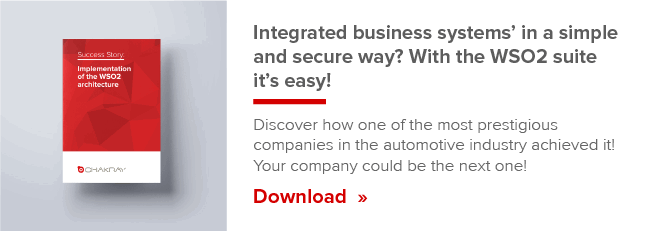Historically, businesses have witnessed and implemented solutions to store data from multiple sources that, back in the day, allowed for the large-scale integration of data. However, this development has become largely unproductive based on the new demands faced by the markets. Today, data integration services have evolved and have become promising. Learn more about them in this article.
Data integration and its benefits to companies
Often times, undergoing a digital transformation only attracts attention in relation to new aspects, such as a novel functionality and improved process efficiency and speed, and the depth of this process is overlooked. The engine that drives this transformation, where we can find the true value of the digital evolution of the company, is disregarded.
Focusing not only on the increase in agility, profitability and new sources of income, implies an understanding that behind these improvements there is a vital integration work that connects the various technological initiatives that, collectively, accomplished synergized business results.
This involves a great effort by companies seeking the digital transformation of a business, given that it implies a radical change in their technology integration platforms and the way in which this integration is addressed.
Let’s imagine an organization that implements Artificial Intelligence to give a quick response to user inquiries. It will probably need perfect connectivity to customer data, and that implies the existence of an exponential increase in the volume and speed of data arriving from a myriad of points, whose processing requires migration to a cloud platform.
In the face of this problem, the solution lies in digital transformation, incorporating new technologies or companies dedicated to data integration.
In most cases, the traditional integration toolkit has been unable to address this set of everyday complexities in companies. Which is why they need to move on to other integration platforms that are more optimized, perfect and will revolutionize the existing landscape, such as HIP, EAI and EiPaaS.
Hybrid Integration Platform (HIP)
The hybrid integration platform solution is effective in generating interoperability between local technologies and cloud-based solutions.
The commercial benefit for companies lies in the fact that it is viable to invest in state-of-the-art technology while profiting from old investments by incorporating a new integration management model to their local technologies and connect them to modern platforms or data sources.
HIP accommodates 4 essential dimensions:
- Data integration professionals.
- Integration domains (data, B2B, processes and applications)
- Endpoints such as the cloud, mobile devices or IoT.
- Multiple implementation models (cloud, hybrid, integrated).
Enterprise Application Integration (EAI)
Though Enterprise Application Integration (EAI) has been in disuse for several years, today organizations have started understanding the value and benefits that this platform can offer to businesses.
For companies that have hundreds or thousands of pieces of software and applications, connectivity plays a key role, since it helps relieve the pressure on data silos and deeply enhances the migration and data distribution processes, automatically and in real-time.
EAI offers scalable connectivity and data integration automation. This increase in connectivity and data exchange across all areas of a company will encourage more agile and efficient operations.
-7 benefits of Enterprise Application Integration (EAI)-
Enterprise Integration Platform as a Service (EiPaaS)
With the growth of globalization, organizations operate continuously 24/7. For this reason, they need new, efficient applications that guarantee access to worldwide markets and operational and customer data, as well as fast connectivity and data integration services that can streamline and strengthen processes.
EiPaaS is a simple and lightweight solution to these challenges. It has currently gained popularity since its most interesting capabilities lie in the ease in which integrations can be developed and managed. Furthermore, it is based on public and private clouds, allowing for worldwide visibility.







